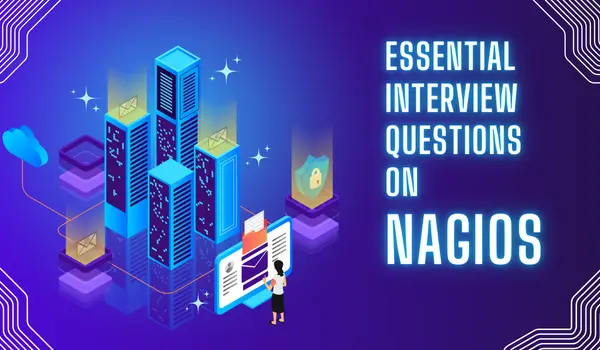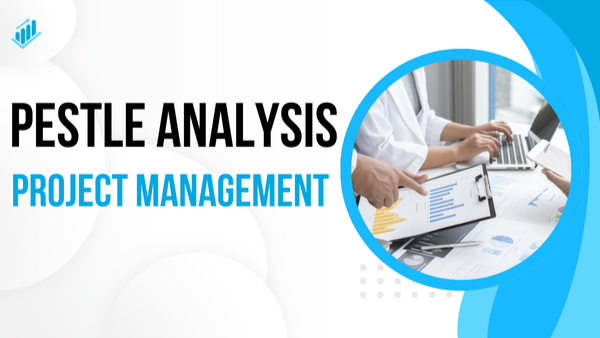
Essential Interview Questions on Nagios for 2024
Nagios is a powerful open-source monitoring tool widely used by IT professionals to ensure the health and performance of critical infrastructure components. As organizations increasingly rely on Nagios for monitoring their systems, the demand for skilled professionals who understand its functionalities is growing.
Are you gearing up for a Nagios interview in 2024? You're in the right place! This blog will walk you through the most important Nagios interview questions you're likely to face. We'll cover everything from the basics to more advanced topics, helping you feel confident and ready to ace your interview.
Understanding Nagios: The Basics
Before diving into specific interview questions, it's important to grasp the fundamentals of Nagios.
What is Nagios?
Nagios is an open-source monitoring system that provides monitoring and alerting services for servers, switches, applications, and services. It alerts users when things go wrong and notifies them again when the issues are resolved.
Why is Nagios important?
Nagios plays a critical role in maintaining system uptime and performance. It helps organizations detect and resolve issues before they escalate into significant problems, thereby ensuring smooth business operations.
Core Benefits of Using Nagios
When discussing Nagios in an interview, be prepared to highlight its benefits:
Monitoring: Tracks the health of various IT infrastructure components, including network protocols and services.
Alerting: Sends notifications via SMS, email, or custom scripts when issues arise, allowing for quick responses.
Reporting: Provides historical data on outages and alerts, helping teams analyze performance over time.
Maintenance: Prevents alerts during scheduled downtimes, reducing unnecessary notifications.

Common Interview Questions and Answers
Here are some essential interview questions along with strategies for answering them:
1. What are the core components of Nagios?
Nagios consists of several key components:
Nagios Core: The central engine that handles scheduling, monitoring, and alerting.
Plugins: Scripts that perform checks on various services and resources.
Web Interface: Provides a user-friendly interface for monitoring and managing alerts.
2. How does Nagios handle alerting?
Nagios uses a notification system to alert users about issues. Notifications can be configured to be sent via various channels, including email and SMS. You can set up different notification periods and escalation levels to ensure that the right people are informed at the right time.
3. Can you explain the difference between active and passive checks in Nagios?
Active Checks: Initiated by Nagios at scheduled intervals to poll the status of a service or host.
Passive Checks: Results are submitted to Nagios by external processes or devices, allowing Nagios to receive status updates without actively polling.
4. What are some common issues you might encounter when using Nagios?
Some typical problems include:
Configuration Errors: Often due to syntax mistakes in configuration files.
Plugin Errors: Issues with the plugins not returning the expected results.
Network Issues: Connectivity problems can prevent Nagios from monitoring remote hosts.
5. How do you troubleshoot a Nagios alert?
To troubleshoot alerts, follow these steps:
Check the Nagios Logs: Look for error messages that can provide clues.
Verify Configuration Files: Ensure there are no syntax errors.
Test Plugins: Run the plugins manually to see if they return the expected results.
Scenario-Based Questions
Interviewers often use scenario-based questions to assess your problem-solving skills. Here are a few examples:
1. A host is showing as unreachable in Nagios. What steps would you take to diagnose the issue?
Check Network Connectivity: Ensure that the network connection to the host is stable.
Review Firewall Settings: Make sure that the necessary ports are open.
Inspect Host Configuration: Verify that the host is correctly defined in Nagios.
2. You receive frequent false positives from Nagios alerts. How would you address this?
Adjust Alert Thresholds: Review and modify the thresholds for alerts to better match the expected performance metrics.
Refine Monitoring Configuration: Ensure that only relevant metrics are being monitored to reduce noise.
Soft Skills and Team Collaboration
In addition to technical knowledge, interviewers will look for soft skills. Here are some points to consider:
Communication: Explain how you would communicate issues and resolutions to your team.
Teamwork: Discuss your experience working with cross-functional teams to resolve monitoring issues.
Conclusion
Preparing for a Nagios interview in 2024 requires a solid understanding of the tool's functionalities, common issues, and best practices. By familiarizing yourself with the core components, benefits, and potential challenges associated with Nagios, you can confidently answer interview questions and demonstrate your expertise.
Remember to articulate your responses clearly, and don't hesitate to share relevant experiences that showcase your problem-solving skills and teamwork abilities.
With the right preparation, you can position yourself as a strong candidate for any role requiring Nagios expertise. Good luck!

About Anita Ankam
Anita Ankam – Expert Project Management Instructor
Anita Ankam is a highly experienced and certified project management instructor, specializing in globally recognized methodologies such as PMP®, PMI-ACP®, DASM®, and DASSM®. With an extensive academic background, including an MBA and MSc, Anita holds multiple industry-leading certifications, including PRINCE2, PRINCE2 Agile Practitioner, CSM, ASM, ITIL, and Six Sigma Black Belt.
As an authorized training instructor, Anita has guided countless professionals in mastering project management frameworks and agile practices. Know more.
Related Posts

Featured Links
Contact us
- PMP® Certification Course |
- CAPM Certification Course |
- PMP Certification Training in Mumbai |
- PMP Certification Training in Pune |
- PMP Certification Training in Hyderabad |
- PMP Certification Training in Delhi |
- PMP Certification Training in Chennai |
- PMP Certification Training Course in Ahmedabad |
- PMP Certification Training Course in Bangalore |
- PMP Certification Training Course in Bhubaneswar |
- PMP Certification Training Course in Chandigarh |
- PMP Certification Training Course in Gandhinagar |
- PMP Certification Training Course in Faridabad |
- PMP Certification Training Course in Dombivli |
- PMP Certification Training Course in Coimbatore |
- PMP Certification Training Course in Ghaziabad |
- PMP Certification Training Course in Gurgaon |
- PMP Certification Training Course in Indore |
- PMP Certification Training Course in Jaipur |
- PMP Certification Training Course in Mysore |
- PMP Certification Training Course in Lucknow |
- PMP Certification Training Course in Kolkata |
- PMP Certification Training Course in Kochi |
- PMP Certification Training Course in Nagpur |
- PMP Certification Training Course in Navi Mumbai |
- PMP Certification Training Course in Patna |
- PMP Certification Training Course in Pimpri |
- PMP Certification Training Course in Vadodara |
- PMP Certification Training Course in Trivandrum |
- PMP Certification Training Course in Thane |
- PMP Certification Training Course in Surat |
- PMP Certification Training Course in Noida |
- PMP Certification Training Course in Visakhapatnam |
- PMP® Certification Training Course in Doha |
- PMP Certification Training in New York |
- PMP Certification Training Course in Chicago |
- PMP Certification Training in Austin |
- PMP Certification Training in Minneapolis |
- PMP Certification Training in Atlanta |
- PMP Certification Training in Dallas |
- PMP Certification Training in San Diego |
- CAPM Certification Training in Mumbai |
- CAPM Certification Training in Bangalore |
- CAPM Certification Training in Hyderabad |
- CAPM Certification Training in Delhi |
- CAPM Certification Training in Pune |
- CAPM Certification Training in Chennai |
- CAPM certification Training in Kolkata |
- CAPM certification Training in Gurgaon |
- CAPM certification Training in Noida |
- CAPM Certification Training in Ahmedabad |
- PMI Certified Professional in Managing AI (PMI-CPMAI)™ |
- PMI-RMP - PMI Risk Management Professional |
- PMI-PMOCP - PMI® Project Management Office Certified Professional
- AZ-900: Microsoft Azure Fundamentals |
- AZ-104: Microsoft Azure Administrator |
- AZ-204: Developing Solutions for Microsoft Azure |
- AZ-305: Designing Microsoft Azure Infrastructure Solutions |
- AZ-400: Designing and Implementing Microsoft DevOps Solutions |
- AZ-500: Microsoft Azure Security Technologies |
- AI-900: Microsoft Azure AI Fundamentals |
- DP-900: Microsoft Azure Data Fundamentals |
- CLF-C02: AWS Certified Cloud Practitioner |
- GCP-FC: Cloud Digital Leader |
- GCP-ACE: Associate Cloud Engineer |
- GCP-PCA: Professional Cloud Architect |
- GCP-PCD: Professional Cloud Developer |
- GCP-PCE: Professional Cloud DevOps Engineer |
- GCP-PDE: Professional Data Engineer |
- GCP-PCNE: Professional Cloud Network Engineer |
- GCP-PCSE: Professional Cloud Security Engineer |
- GCP-ML: Professional Machine Learning Engineer |
- GCP-PBA: Professional Business Intelligence Analyst |
- DP-100: Designing and Implementing a Data Science Solution on Azure |
- DP-203: Data Engineering on Microsoft Azure
- PMP® is a registered mark of the Project Management Institute, Inc.
- CAPM® is a registered mark of the Project Management Institute, Inc.
- PMI-ACP® is a registered mark of the Project Management Institute, Inc.
- Certified ScrumMaster® (CSM) ia a registered trademark of SCRUM ALLIANCE®
- While we strive to ensure that all prices listed on our website are accurate, we reserve the right to modify them at any time without prior notice.
Copyright © Certifyera Consulting Services. All Rights Reserved | Designed and Developed by WebAnaya


